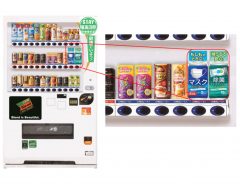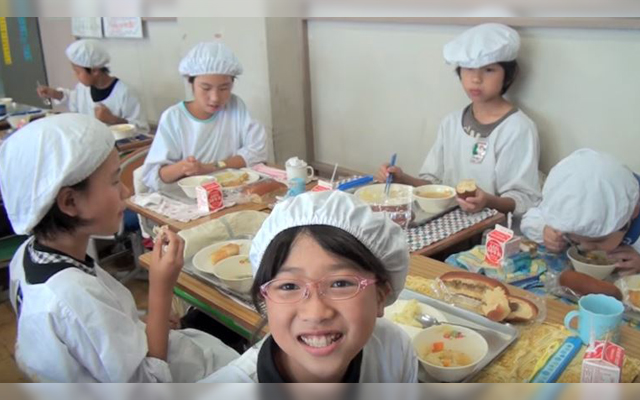- Tags:
- Japan / Japanese food / Japanese school / School lunch
Related Article
-

Stunning photo of Mt. Fuji floating in night sky wows internet
-

Japan’s Ultimate Lazy Pillow Is A Giant Set Of Pigtails That Hugs You Back
-

Night photographer’s tripod mishap causes Evangelion-esque apocalyptic shot
-

Japanese vending machines now carrying masks and antibacterial wipes
-

Curry Flavored Cola Is Coming To Japan, Whether You Asked For It Or Not
-

Tokyo Cafe Serves Up The Most Beautiful Pancakes You’ll Ever See In Your Life



Back in your school days, the lunch bell may have been a sign of temporary freedom for you. A nice break from a slog of classes, and if you were lucky, something tasty and refreshing to snack on. While that sentiment remains the same in Japanese schools, teachers are also hoping that education continues through lunch time.
A recently posted YouTube video takes a look inside an elementary school in Saitama prefecture, Japan, to show the emphasized educational aspects of lunchtime in Japanese schools. As you may know, students in Japan are sometimes held to work-like standards a little different than their Western counterparts. While janitors are employed at schools, classroom and hallway cleanup is typically self-maintenance that the students conduct themselves.
The same principles of self-application go for lunchtime as well. Particularly in elementary school, the lunch break is regarded as a communal activity where students serve each other, eat together, and ideally learn about the nutritional importance of what they are eating and why.
Check out the video below to see kids covering sanitation, cooking from scratch, and working together.
It's important to note that the video above is not representative of every school in Japan. Catering companies and schools that feature less involved lunchtime activity are not unusual, but it is safe to say that there is an attempt at having some unified sense of incorporating nutritional education and lunchtime duty and responsibility at as many schools as possible.
Japanese school lunch, or Kyushoku (給食), got a boost in the nutritional direction following World War II, particularly in 1954 when the School Lunch Act was put into place. The act was designed to promote social interaction among students and help use lunch time as a vehicle to teach about dining etiquette and food production as well.
According to the Washington Post, Masahiro Oji, a director of school health education for the Japanese government, made note that at an Asia-Pacific Economic Cooperation workshop for school lunch programs, most countries sent members from their agricultural agencies, while Japan sent officials from their ministry of education. Oji stated that “Japan’s standpoint is that school lunches are a part of education...not a break from it.”
Source: Gakkou Kyushoku
It's not something that happens everywhere in Japan, but the idea of supplementing education about nutrition, hygiene, and teamwork in a child's formative years is definitely one that can be appreciated.